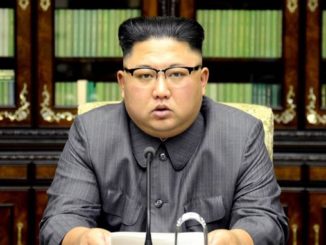
Nearly 17 years after U.S. troops largely pulled up stakes from the kingdom, the U.S. is now back in force, The Wall Street Journal reported.
In a base of tents in the desert about 60 miles southeast of Riyadh, some 2,500 U.S. military personnel are launching F-15 fighter jets in soaring arcs overhead and manning Patriot missile batteries in shifts. Or they play chess and video games to pass the hours, with an NFL-themed video game splashed on a flat-screen TV inside a recreation tent, the Journal added.
The return of the U.S. troops—after maintaining a much smaller footprint for nearly two decades—reflects the alarm of Saudi and American leaders at the current threat posed by another regional power: Iran.
“We face a thinking enemy that is playing a real regional conflict for keeps, and they’re very good,” said Gen. John Walker, the commander of the 378th Air Expeditionary Wing at the base.
The U.S. deployment at Prince Sultan highlights the changing shape of the American military presence in the surrounding region amid President Trump’s policy of confrontation with Iran and decision to withdraw some forces from Syria. Though Mr. Trump has vowed to disengage from the Middle East, he has sent thousands of additional soldiers to the region.
U.S. forces were last stationed at the base in 2003, more than a decade after the U.S. sent more than a half million American troops to protect the kingdom following Saddam Hussein’s invasion of Kuwait in 1990.
Osama bin Laden, who opposed the deployment of U.S. soldiers in the country that hosts Islam’s two holiest sites, launched a campaign of attacks on government and Western targets in the kingdom. In 1996, a bombing at a housing complex also killed 19 members of the U.S. Air Force. Although American authorities later blamed the attack on Iran, bin Laden praised the attack at the time, the Journal writes.
Gen. Walker was last deployed here in 1997. “The wind and the dust are the same,” he said.
The U.S. withdrew most of its forces from Saudi Arabia following the U.S.-led invasion of Iraq that ousted Saddam Hussein, closing a fraught chapter in American-Saudi relations. The U.S. military moved its regional center of gravity to neighboring Qatar, much to the relief of Saudi leaders who were freed from the burden of hosting an unpopular foreign military force.
The Saudis’ relief at being rid of the Americans recently turned to concern about being without them, the Journal writes.
Central to the American forces’ mission now in Saudi Arabia is to prevent a repeat of attacks from Iran, such as the missile and drone strike in September 2019 on Saudi oil facilities that temporarily crippled the kingdom’s petroleum production, threatening global supplies. U.S. and Saudi officials blamed Iran for the attack, but the Iranian government has denied involvement.




Be the first to comment